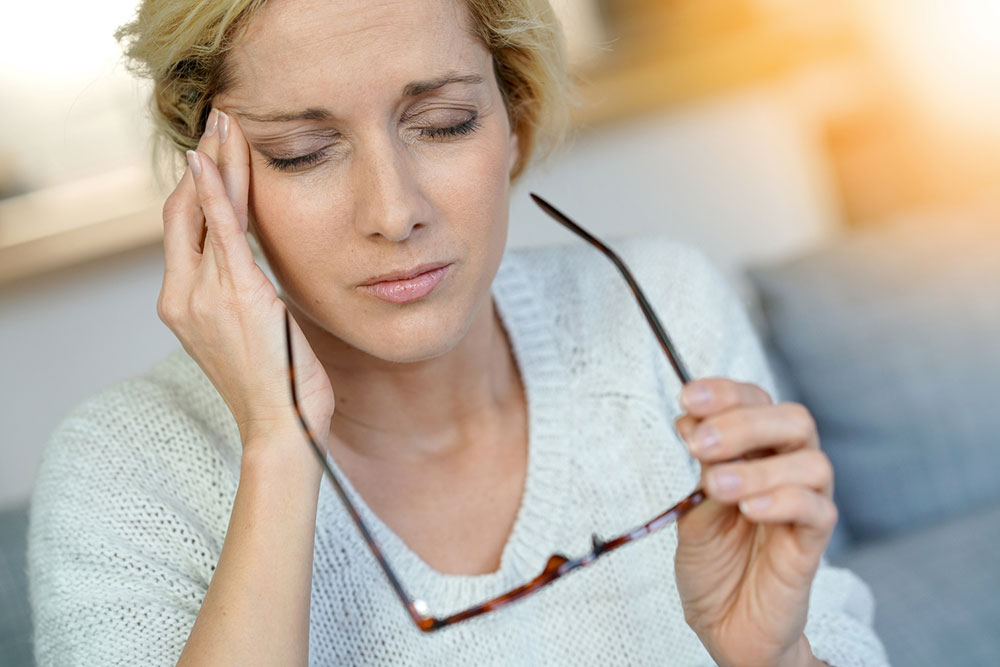Top Treatment Options for Migraines
A migraine is a throbbing headache that usually hurts more on one side of the head and near the temples or eyes. It is often accompanied by nausea, vomiting, or blurred vision. About 20% of migraines begin with migraine auras, which make the patient see halos around light as well as bright and wavy lines of light. The pain may last anywhere between four hours and three days, and if left untreated, it can be strong enough to hamper daily activities.

The exact cause behind migraines is still not known, but possible triggers include certain foods, stress, hormones, and flashing lights. Women are three times more likely than men to suffer from migraines, and they are very common among people with neurological or hereditary ailments like epilepsy, depression, and asthma. Herein, we explore the various treatments for migraines that have highly effective.
Medications
Several types of medications, both over-the-counter and prescription, can be considered effective treatments migraines:
- Over-the-counter medicines
Several anti-inflammatory pills and pain relievers can be useful. Common examples include aspirin, ibuprofen, naproxen sodium, and acetaminophen. Overuse, however, could end up worsening the condition or cause gastrointestinal disorders. - Triptans
Triptans are the most common prescription medications used to treat migraines. Examples include Amerge, Imitrex, Frova, and Zomig. It is essential to consult a physician before taking these medications as those who take medications for high blood pressure, cardiac issues, or depression may be advised to not take triptans. - Ergotamines
If triptans do not work, your physician may prescribe ergotamines like Migergot and Cafergot. These medications come in the form of nasal sprays, tablets, and injections. However, side effects include nausea, muscle pain, and dizziness. - Preventive medications
If the migraine headaches are severe and/or frequent, you may need to take medications on a regular basis to keep them under control as part of the treatment plan. Calcium channel blockers and beta blockers can also be helpful in this regard. Antidepressants and anticonvulsants can also be used to treat a migraine, though it is recommended to take them under medical supervision. - Botox
while it is primarily used to smoothen out aging skin, some doctors believe that Botox could help cure migraines by blocking the neurotransmitters that carry the pain signals from the brain.
Devices
If you are unable to take medication or do not wish to, certain devices can be helpful during treatments migraines.
- Cefaly
This is a device that resembles a headband. It is to be used once a day for a 20-minute session. It sends electrical impulses to the forehead, during which you may feel a tingling sensation that, in turn, stimulates a nerve that is associated with migraines. - SpringTM
This device works by holding it at the back of your head when a migraine hits, and it releases a magnetic pulse to stimulate a part of your brain. - gammaCore
This is a non-invasive vagus nerve stimulator (nVS) that you position over the vagus nerve in the neck to stimulate it by means of mild electrical shocks, thus relieving pain.
Natural and Alternative Remedies
For those who do not want to rely on chemical medication of any kind, alternative therapies have proven to be as effective treatments for migraines as medications and devices.
- Biofeedback
This is an alternative migraine treatment that uses a monitor to train you and also detect any muscle tension and temperature fluctuations that indicates the onset of stress. - Acupuncture
This is a Chinese therapeutic technique that inserts extremely fine needles into various spots on the body to balance energy flow. Some studies have found that acupuncture induces the release of chemicals that relieve pain, though the validity of the results is debated. - Natural oils
Lavender oil helps to regulate serotonin levels in the body, which in turn helps in decreasing the sensation of pain. It can be inhaled by adding a few drops to two or three cups of boiling water. Basil oil also acts as a muscle relaxant when applied topically (on the skin), and can thus relieve migraines.
Lifestyle changes
Anxiety, stress, and improper eating habits often accentuate the risk of migraines, certain lifestyle changes can be considered as great treatment options.
- Stress relief
While it is difficult to completely eliminate stress, relaxing exercises like deep breathing, listening to calming music, and meditation can help reduce to stress and, in turn, help in the treatment of migraines. - Eating and sleeping on time
Little and no sleep can trigger headaches, while low or high sugar can also induce migraines. - Controlling hormonal migraines
For women who suffer from migraines before or during their period, hormonal birth control or anti-inflammatory medication could help to prevent migraines. - Controlling diet
Aged and fermented foods have high levels of tyramine, which tends to constrict and expand blood vessels and trigger a migraine. Experts recommend reducing consumption of foods like cheese, pepperoni, pickles, and soy sauce. Drink plenty of water to avoid dehydration. Excess caffeine in your daily diet could also induce migraines. Monosodium glutamate (MSG) is another compound that could trigger migraines, so processed and fast foods that are high in MSG should be avoided at all costs.